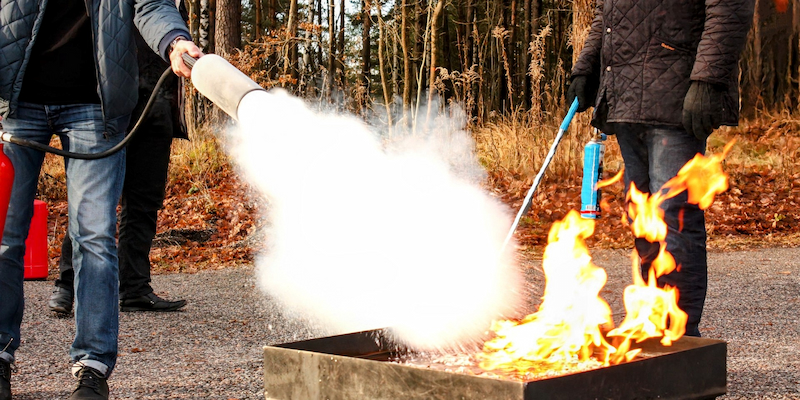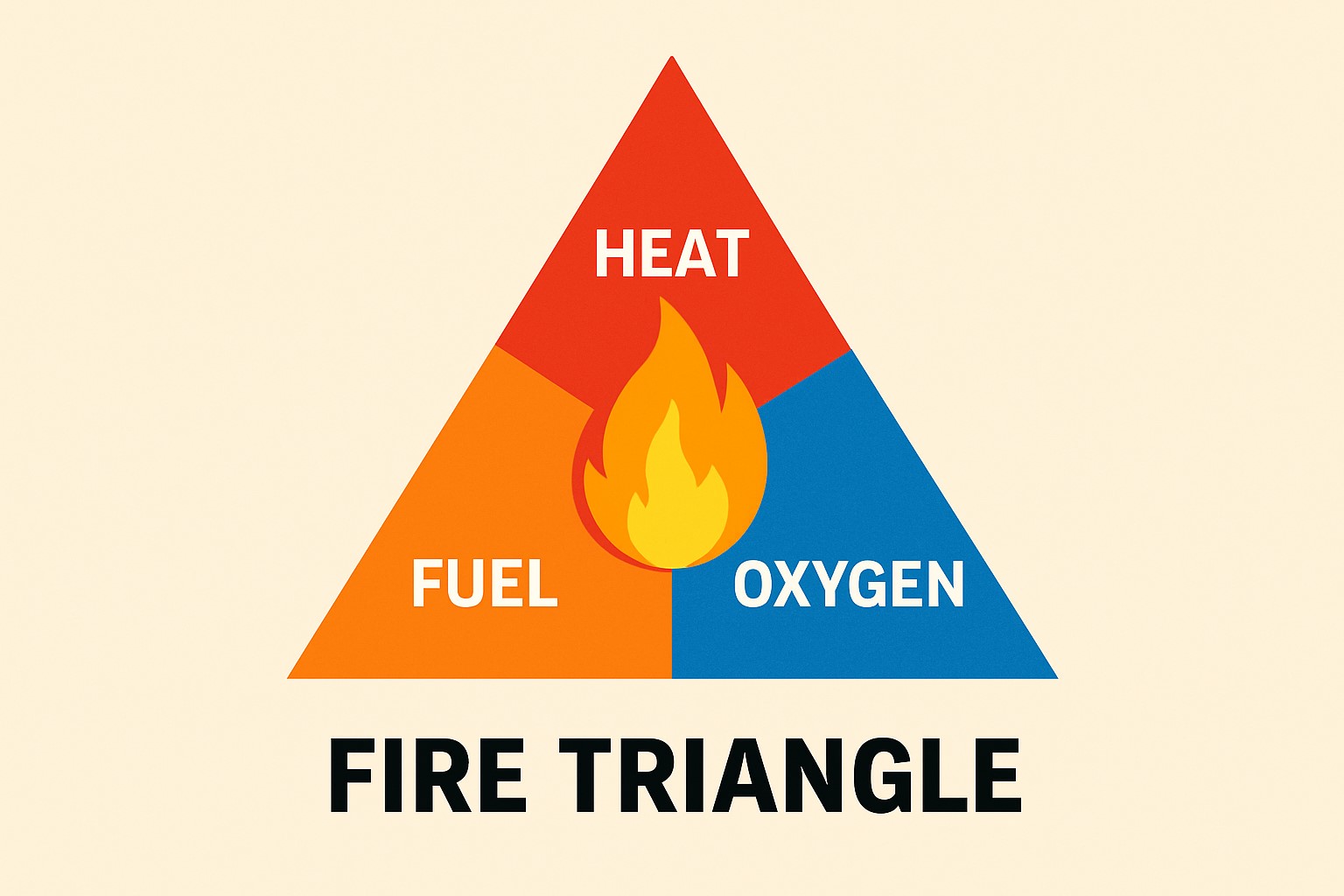Understanding the fire triangle: Fire Safety on Construction Sites
At Defender, we specialise in fire safety and prevention, providing tailored solutions to keep your site and workers protected. With construction sites being high-risk environments for fires to break out, let’s discover how the fire triangle plays a role and the best ways to prevent and manage fire emergencies.
Why Are Construction Sites High-Risk for Fires?
Construction sites contain many hazards that increase the likelihood of a fire breaking out. Some key risks include:
- Flammable Materials – Wood, insulation, fuels, and chemicals create a high fire load as they are combustible materials.
- Hot Work – Welding, cutting, and grinding generate sparks that can ignite nearby flammable materials.
- Electrical Faults – Temporary wiring, overloaded circuits, and exposed cables increase the risk of short circuits and electrical fires.
- Unattended Heat Sources – Heaters, generators, batteries recharging, and machinery can cause ignition if placed near combustibles.
- Lack of Fire Protection – Many construction sites lack fire safety systems, making early fire suppression critical.
Understanding how fires start and spread is essential in preventing them. That’s where the fire triangle comes in.
What is the Fire Triangle?
The fire triangle is a simple but effective model that explains how fires ignite and sustain. It consists of three essential elements that must be present for a fire to burn:
- Heat – A source of ignition, such as welding sparks, open flames, or electrical equipment.
- Fuel – Any combustible material like wood, paper, fuel, and chemicals.
- Oxygen – The air that feeds and sustains the fire.
Common Fire Triangle Elements on a Construction Site
Construction sites contain all three elements in abundance:
- Heat: Hot work, machinery, temporary heaters, electrical faults
- Fuel: Timber, insulation, packaging, fuel storage, waste materials
- Oxygen: The open-air environment, especially in high-wind conditions, accelerates fire spread
The Fourth Element: Fire Tetrahedron
In addition to the fire triangle, there’s a fourth element known as the chemical chain reaction, which keeps the fire going once it has started. If this reaction is not managed, it can cause flames to spread quickly, making it harder to control the fire.

How to Break the Fire Triangle
To prevent and extinguish fires, you need to remove at least one of the three elements:
- Remove Heat: You can cool down the fire by applying water or using an appropriate extinguisher to suppress the flames.
- Remove Fuel: You can stop specific fires involving liquid or gas by cutting off the supply. It’s best practice to ensure that flammable materials are stored properly and that waste is disposed of on a regular basis.
- Remove Oxygen: You can use a fire blanket, CO₂ extinguishers, or foam to smother the fire and reduce the oxygen supply.
In addition to the three elements, you can disrupt the chain reaction by using dry chemical extinguishers to stop the combustion process.
Which Fire Extinguishers Are Best for Construction Sites?
Different types of fires require different extinguishers. On a construction site, the most effective extinguishers include:
- Water (Class A and colour coded with a red label): Suitable for common materials like wood and paper.
- Foam (Class A and B and colour coded with a cream label): Works well on flammable liquids, including paints and solvents.
- Dry Powder (Class A, B, and C and colour coded with a blue label): A flexible option that can handle solids, liquids, and gases.
- Carbon Dioxide (Class B and Electrical and colour coded with a black label): Ideal for fires involving flammable liquids and electrical equipment.
- Wet Chemical (Class F and colour coded with a yellow label): Tailored for fires caused by cooking oils and fats.
- Lithium-ion battery (Class B and colour coded with a green label): Designed specifically for fires caused by lithium-ion batteries.
How Defender Can Help Keep Your Site Safe
At Defender, we provide a comprehensive range of fire safety solutions designed to protect construction sites from fire hazards. Our products include:
✅ Fire Extinguishers – A full range of extinguishers suited for all fire types.
✅ Fire Extinguisher Trolleys – Mobile solutions for quick access to fire equipment in high-risk areas.
✅ Maxi Safety Stations – All-in-one fire safety hubs with extinguishers, alarms, chemical spillage supplies, and first aid.
✅ Wireless Alarm Systems – The ideal fire safety solution for construction sites, crafted to enhance efficiency and ensure safety throughout your projects.
By equipping your site with the right fire safety measures, you can reduce risks, protect workers, and stay compliant with safety regulations.




